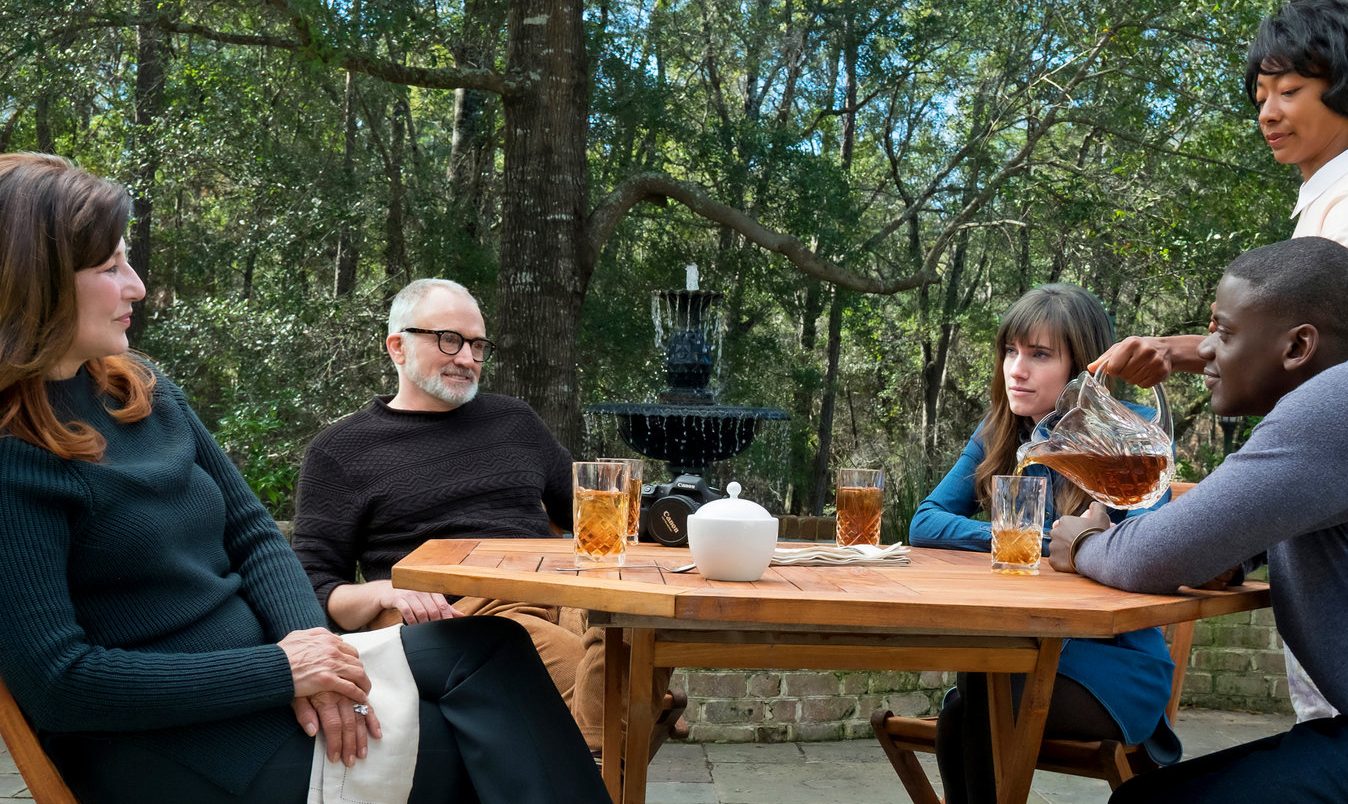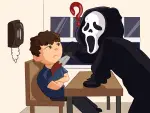No film genre has attained a cult following quite like horror. From legendary classics like “Halloween” and “Carrie,” to eclectic musicals like “The Rocky Horror Picture Show,” to modern works like “A Quiet Place” and “Parasite,” these movies attract fans by the thousands.
Three main theories exist for why people like horror. First, people like the tension scary movies provide; they get a sense of mystery and shock. Second, some movies evoke anxieties people can relate to, like the universal fear of being chased. The third theory is simply that horror films are entertainment for people that can separate them from reality. Nothing in the movie is real, so there’s no reason to be scared.
People are also drawn to recent horror for its commentary on social issues. Directors use their movies to hide a deeper meaning underneath the more traditional horror elements. Now more than ever, filmmakers’ attempts at this are becoming more and more popular. This makes modern horror movies deeply different — and sometimes unsuccessful — when compared to horror classics.
How the Genre Has Changed Over Time
Horror movies are almost as old as cinema itself. Early horror was defined by gothic themes that are most clearly seen in elements like the mysterious settings and madness of the main characters. These featured characters were also clearly distinguished from the “normal” people in these films. A few notable examples include “Frankenstein” (1910), “Dr. Jekyll and Mr. Hyde” (1920) and “Nosferatu” (1922).
Horror movies in the 1930s continued to feature gothic themes and clear villains, but directors expanded this notion by making monsters the protagonists. 1933’s “King Kong” and 1935’s “Werewolf of London” exemplify this shift. The 1930s also gave rise to the first zombie movie, “The White Zombie,” in 1932.
In the ‘50s, horror movies began to draw inspiration from contemporary political events. The Cold War led to a fear of invasion, and this fear was illustrated with an alien invasion in “Invasion of the Body Snatchers” (1956). Similarly, Japanese filmmaker Ishiro Honda portrayed the nuclear holocaust from his country’s perspective in “Godzilla” (1954).
Horror movies in the 1960s and 1970s pushed the envelope in terms of violence and sexuality, often beyond what some people at the time were comfortable with. This era also contained the final works, most notably “Psycho” (1960), of Alfred Hitchcock. Social commentary persisted in the genre as well; “The Wicker Man” (1973) compared Christianity and Paganism and “The Dawn of the Dead” (1978) portrayed consumerism as a zombie plague.
The 1980s saw the rise of the most popular horror subgenre: slasher films. These films follow the brutal murders of a group of teens by a menacing villain, like Freddy from “A Nightmare on Elm Street” (1984) and Jason from “Friday the 13th” (1980). The king of horror, Stephen King, also made his mark on horror at this time, most notably in “The Shining” (1980). Though not a slasher, this thriller used gore and disturbing imagery just like other films of the time.
From the 1990s onward, horror pulled elements from all these eras, but also expanded into new territories. The unrivaled success of “The Silence of the Lambs” (1991) capitalized on the universal fear of serial killers. This era also expanded into arcane fears, as seen in “The Blair Witch Project” (1999) and “The Sixth Sense” (1999).
The “Get Out” Effect
Released in 2017, Jordan Peele’s “Get Out” changed the horror game forever. The film successfully offers social and cultural commentary within its absolutely bone-chilling plot. Chris, portrayed by breakout star Daniel Kaluuya, goes to visit his white girlfriend’s family and uncovers their plot to implant white, rich peoples’ brains into Black bodies. A disturbing business model, to say the least.
When this movie was released to theaters, it became an instant sensation for its great horror elements and innovative social commentary. Peele used the film to touch on a phenomenon rarely explored in any form of media: liberal racism. While the Armitages are model middle-class white liberals at first glance, they are immensely condescending toward Black people and eventually appropriate their entire existence.
Writer Lanre Bakare says, “The thing ‘Get Out’ does so well — and the thing that will rankle with some viewers — is to show how, however unintentionally, these same people can make life so hard and uncomfortable for black people. It exposes a liberal ignorance and hubris that has been allowed to fester. It’s an attitude, an arrogance which in the film leads to a horrific final solution but, in reality, leads to a complacency that is just as dangerous.”
“Get Out” earned a staggering $255.4 million at the box office, received countless award nominations and won Peele the Academy Award for best original screenplay in 2018. More notably, however, is the change it made in horror as a whole. “Get Out” opened the door for the genre to directly explore social issues in a setting and with characters familiar — and therefore scarier — to the average viewer.
The aforementioned films, “The Wicker Man” and “The Dawn of the Dead,” offer social commentary, but do so using unrealistic settings. No one in the audience has visited a town where a pagan religious group wears animal masks nor lived through a zombie apocalypse, but they have met people like the Armitage family. The success of “Get Out” has opened the door for horror to move away from plots like these and toward directors’ attempts at bringing horror and its paired social commentary into the everyday setting of the viewer.
Although “Get Out” was revolutionary, it stayed true to some core elements of horror. Firstly, the villains are multifaceted. In horror, if the villains are a caricature of what they represent, the audience will view it as a parody instead of a successful fright. Horror also requires that the film very slowly reveals the plot for the viewer. To someone who knows nothing about the film, discovering the Armitages’ plot in “Get Out” is a true shock.
When classic horror did offer social commentary, it needed to be nuanced. Too heavy-handed a metaphor took away from the good horror elements. “Get Out” was successful with its commentary because Peele’s thesis wasn’t obvious. He used complex characters and refined details to make his point, all on top of an incredible thriller plot.
“Old,” “Karen” and Publicly Damned Horror
Attempts at following in the footsteps of “Get Out” aren’t always successful. This summer, the trailers for two movies that are expected to fall into this category were released: “Old” and “Karen.” Trailers are meant to be true to the films they advertise, and the trailers for “Old” and “Karen” leave much to be desired. They both clearly have a social perspective they are offering, but they are missing the nuances of “Get Out” and classic horror elements, resulting in a horror trailer that offers little hope for the films’ reception in the horror community.
While M. Night Shyamalan’s newest movie “Old” received mixed reactions, the trailer prompted a variety of jokes on social media — not the best reaction to a horror trailer. The preview shows a family going to a beach where kids aren’t allowed. They didn’t heed this warning, and the members of the family begin to age rapidly.
“Old” clearly offers commentary on “the horror of aging” but compared to “Get Out,” this central theme lacks nuance. Where the Armitages’ plot represents a complex social issue, Shyamalan seems to be simply saying “aging is bad” by making the characters fearful of growing old. In order for horror’s social commentary to be successful, it shouldn’t be the whole plot, but a single layer among compelling horror elements.
When the trailer for “Karen” came out, the internet rightfully freaked out. The preview for the Coke Daniels film shows a Black couple moving into a neighborhood of huge houses, one of which is owned by an entitled white woman named Karen. Anyone who is aware of the stereotypical “Karen,” including the movie’s creator, from social media can guess how the trailer continues; she harasses the couple, commits racist microaggressions and calls the cops — a lot.
Based on the trailer, Karen is a complete caricature of a main villain. The villains in “Get Out” are the complete opposite; each family member has their own ideals, goals and perspectives, and the audience gets to see them throughout the film. Rose, the daughter, is a multifaceted character —almost literally. One face she shows to Chris as his girlfriend, and the other she shows as the recruiter for her family’s sick business.
Horror is an inherently complex and varied genre, but for it to be successful, there are some necessary elements — especially if the goal is to offer social commentary. Classic gore, suspense and villains never fail, but social perspectives should be nuanced and complex. They can’t be stated plainly or be the central gimmick of the film. While the “Get Out” effect may be responsible for some horror failures, its power and the power of its successful protégés are worth the occasional “Karen.”

















